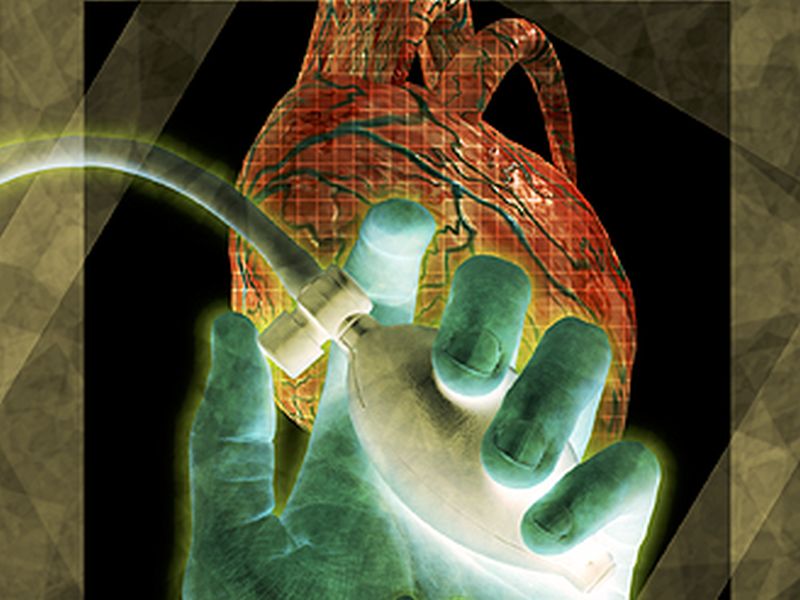A Less Invasive Fix Works Well for Abdominal Aneurysm
By Serena GordonHealthDay Reporter

THURSDAY, May 30, 2019 (HealthDay News) -- Bulges (aneurysms) in the abdominal aorta can pose real danger, but research suggests a less invasive method may be as good a fix for the problem as traditional surgery.
The less invasive procedure is called endovascular repair. There are a number of short-term benefits to this less invasive fix, such as shorter hospital stays and faster recovery. But until now, it wasn't clear if long-term survival was as good.
"Endovascular repair is durable, and mortality is similar to open surgery," said study co-author Dr. Julie Freischlag, chief executive officer of Wake Forest Baptist Health in Winston-Salem, N.C.
Dr. John Osborne, an American Heart Association spokesperson and director of cardiology at State of the Heart Cardiology in Dallas, Texas said this is a very important study and the long-term data "clearly swings the balance in favor of endovascular repair."
Traditionally, repair of a bulge -- or aneurysm -- in the abdominal aorta required a large incision from the chest to the belly button, according to the U.S. National Institutes of Health. Left untreated, such an aneurysm can burst, creating a life-threatening emergency.
Endovascular repair is done by threading a catheter from the groin to the aneurysm. Then, a stent graft (a flexible tube with metal support) is place in the weakened area of the aorta to strengthen it and lessen pressure on the aorta walls.
Freischlag said there are a number of benefits to the endovascular repair, such as fewer deaths during the procedure than in open surgery, shorter hospital stays and less pain. People also recover faster after endovascular repair.
"Patients who have endovascular graft repair go back to work quicker, usually within a month. With open, it can be three to six months," Freischlag said.
The study included almost 900 people who needed abdominal aorta aneurysm repair. They were undergoing elective surgery, not emergency surgery.
Slightly more than half (444 patients) were randomly selected to undergo endovascular repair. The other half had open surgery (437 patients). The researchers tracked patients' health for up to 14 years.
During that time, 68% of those in the endovascular group died, compared to 70% of the open surgery group.
There were 12 deaths related to aneurysms (2.7%) in the endovascular group and 16 (3.7%) in the open group.
More patients in the endovascular group had to undergo second procedures, the study found. Freischlag said this is a known concern with endovascular repair. In fact, people who've had endovascular repair have to go back at least yearly to have the repaired area checked (via imaging, such as ultrasound, CT or MRI).
Not everyone who has an abdominal aneurysm is a candidate for endovascular repair. Freischlag said a patient has to have "good anatomy," which essentially means that surgeons need a good area to place a stent.
Both Freischlag and Osborne said that endovascular repairs for abdominal aneurysms have been done for about 20 years now, so most vascular surgeons should be experienced in doing the procedure.
Both also said that the long-term survival rates might be even better if the study were started today because the grafts have improved and surgeons are now more experienced.
Risk factors for abdominal aortic aneurysms include older age, being male, having high blood pressure or ever smoking more than 100 cigarettes. "That's how much smoking increases the risk. That's just five packs of cigarettes," said Osborne, who wasn't involved with the study.
While abdominal aortic aneurysms are considered a "white male disease," Freischlag said that women can get them, and that anyone who has a family history of aortic aneurysms should let their doctor know because about a third of people who have a family history will also have the condition.
People who have an increased risk need to be screened with abdominal ultrasound, Osborne said.
"It's important to find these aneurysms before they rupture," he noted.
The findings were published May 29 in the New England Journal of Medicine.
More information
The Society for Vascular Surgery offers more about endovascular repair.

The news stories provided in Health News and our Health-E News Newsletter are a service of the nationally syndicated HealthDay® news and information company. Stories refer to national trends and breaking health news, and are not necessarily indicative of or always supported by our facility and providers. This information is provided for informational and educational purposes only, and is not intended to be a substitute for medical advice, diagnosis, or treatment.

